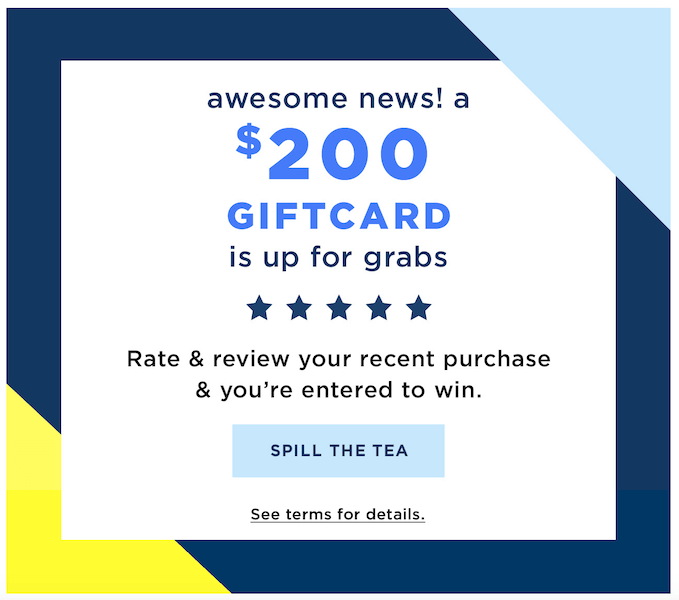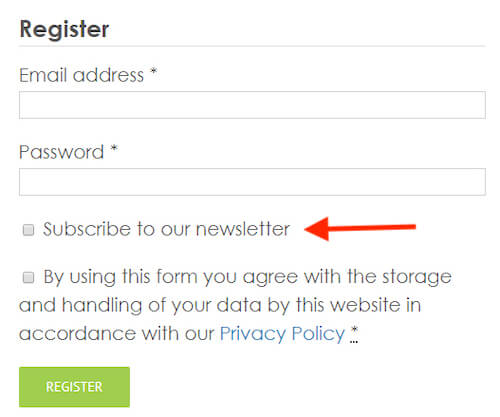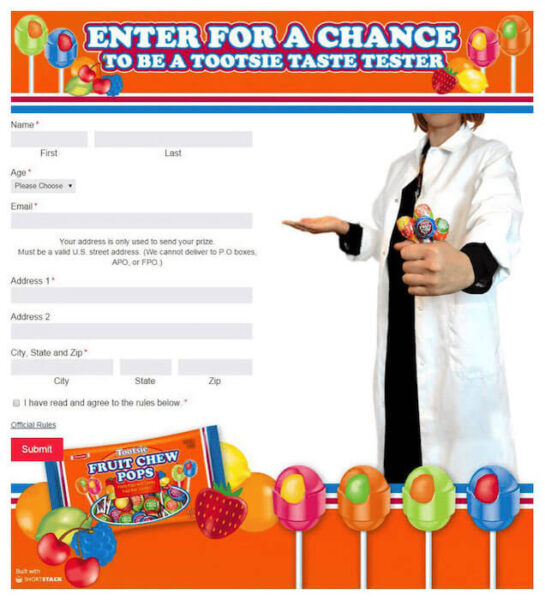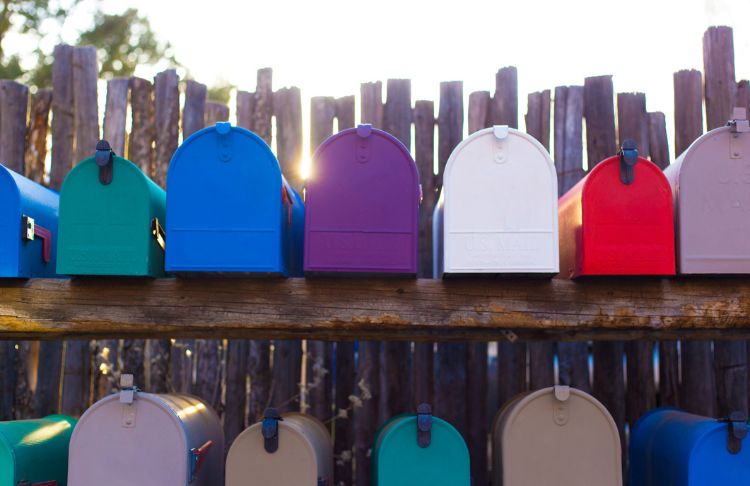When it comes to email marketing, you may have heard the phrase, “The money is in the list.” If not, by “list,” we mean your email list. It’s valuable–even more so than your social media following–because you own it.
But why build an email list in the first place? A basic answer: Because email marketing is really effective–if you have people to send your emails to.
In fact, email marketing has a higher ROI than any other digital marketing channel. For every $1 spent, email marketing generates a $36 return on your investment. I’d say that’s valuable.

Here, we’ll share:
- Why it’s important to build an email list
- The best practices and tactics for building an email list from scratch
- Examples of how other businesses have built their email lists
Let’s get started!
Why do you need to build an email list?
Before we get into how to build an email list, let’s talk about why it’s so important. Focusing on the strategies we’re about to share is worth it because building an email list full of valuable, engaged visitors and customers can change your business—and bottom line. Here’s how.
1. You can send targeted emails to segments of your audience
While having a large email list is valuable, being able to leverage that list to send targeted emails that are relevant to segments of your audience is even better.
Let’s look at an example from Grammarly. The Grammarly email team likely sent this message to the segment of their email list that wasn’t actively subscribing to Grammarly Premium:

This is super valuable for their open and engagement rates as it targets those consumers who are candidates for Grammarly Premium, and it spares the inboxes of those who already pay for it.
Targeted email marketing messages communicate to your audience that you value their attention and can offer a unique solution to their specific problem. Segment messages by sales funnel stage (like the example above), location, shopping activity (e.g., abandoned cart emails), and much more.
2. Your email list is “owned”
If you have an app, social media account, or website, you don’t control those things–they belong to the companies that host them. If those companies decide to change their policies or close down their services, your carefully-built app or social following can be rendered useless overnight.
Brendan Hufford, famous growth marketer and founder of Growth Sprints, suggests,
“The most important part of owning your list is understanding it’s one of the last remaining relationships you can own.
Social media platforms cut reach every day. Ads are less effective every year. Platforms like Medium and Substack strip creators’ reach and ability to engage with their audience. Email, even with all its drawbacks, is still the most reliable way to engage with your audience.”
When it’s just you and your audience communicating via email, though, nothing can happen without your knowledge or consent—or that of your recipients’.
3. You can increase conversions and sales
Your email list represents the group of people most likely to buy from you.
By subscribing to your list, they’ve indicated that they’re familiar with your brand, they trust you, and they want to hear from you. Even better, depending on when and how they’ve opted in (i.e. via an online course, newsletter form, or purchase), they’ve shown you what they’re interested in.
With this information, you can send them the right offers at the right time—increasing your sales and strengthening your authority.
What does this look like in practice? Marketer Neil Patel created a quiz to capture leads on his health website, Nutrition Secrets.

In under a year, he grew his company to over $100,000/month in revenue—all using targeted email marketing.
4. You build trust with your audience
Email marketing is all about permission. You can’t build an email list without permission, and you can’t keep a list unless the people on it want to be there.
Building an email list involves an element of trust that’s not present in any other type of marketing—not in content marketing, paid ads, or direct marketing (although, those types of marketing are still extremely valuable!).
By committing to transparency and always sending out valuable email content, you can elevate that trust with your audience. The more your subscribers trust you, the more they’ll buy from you.
The inverse also applies: over time, you can grow to trust your email subscribers with important asks like product feedback and audience research. And by involving them in fundamental aspects of your business, you can gain more of their trust and attention, turning them into fans and evangelists.

An example of a customer feedback email from Old Navy.
Here are a few best practices for establishing and maintaining trust as you build your email list:
- Use a clear sender identity, such as “Allie from LOCALiQ”
- Let new subscribers know what they will be receiving—and stay true to your word
- Send a welcome email reiterating what the subscriber can expect from upcoming emails
- See that your message respects the customer
- Use personalization and send relevant emails
- Avoid the baited email subject line
- Add a personalized email signature
Related: Get 30+ email examples and templates you can use to connect with customers.
How to build an email list: 6 best practices
Use these best practices to find out how to build an email list that grows your business–fast!
1. Create an opt-in form on your website and landing page
An opt-in form allows website visitors or landing page visitors to sign up for your email list.
When adding an opt-in form to your homepage or landing page, it’s important to describe how you will use the information, what they can expect from you, and how frequently they’ll receive emails.
This establishes trust early on in your business-customer relationship and sets expectations for users that you won’t abuse their inboxes. If users are uncertain of what they’re signing up for, they probably won’t follow through.
For example, if you send a monthly newsletter featuring top customer stories, tell your website visitors: “Sign up for our monthly newsletter featuring customers like you. We won’t use your email for anything else.”
Set up your email marketing automation to send a welcome email, and reiterate your promise here, too. Consider including a special offer or discount as a way to thank them for signing up (and encourage them to make a purchase).
Here’s an example of an effective email opt-in form by Cult Beauty. The brand uses an attention-grabbing pop-up opt-in form that appears soon after you land on the site’s homepage.

The opt-in form has all the necessary ingredients: a simple design, no distractions, and action-oriented language. They also offer an incentive—a 15% off on the first order—to encourage new customers to sign up. Note how the Cult Beauty team also lists the benefits and expectations for subscribing.
Post-submission, Cult Beauty thanks subscribers for signing up, and the prominent Continue Shopping CTA button encourages clients to keep shopping.

Consider these things while embedding an opt-in form on your landing page or website:
- Write compelling copy that encourages action
- Keep your form fields to a minimum—one to three fields maximum
- Add a clear call-to-action button
- If you know your cadence, mention how often you plan on sending emails
- Offer clear benefits for signing up
- Consider adding social proof to build trust and establish a relationship with your email subscribers. If you don’t have space in your opt-in form design (remember, don’t get too cluttered), you can add social proof to your first welcome email
2. Offer a valuable lead magnet in exchange for an email
Lead magnets (also known as downloadables, content offers, gated content, or freebies) are valuable, complementary content offers provided in exchange for their email addresses.
Users won’t submit their email addresses unless for something valuable. The secret to creating an effective lead magnet is to provide your audience with something they can immediately use to solve a problem or achieve a goal. It should be something truly valuable–not just a cheap bribe.
Examples of lead magnets include:
- Free e-books or case studies
- Checklists or checklist templates
- Worksheets
- Infographics
- Video courses
- Industry reports
- Discount coupons
- Spreadsheets and Excel files
Look how Chris Ducker, a business mentor and the founder of Youpreneur.com, offers a lead magnet in exchange for subscribing to his email list.

The freebie is instant free access to the Youpreneur launchpad, the benefits of which are clearly described in the form copy.
Related: Get tips to create a high-converting landing page.
3. Feature newsletter signup checkboxes on checkout screens
Your checkout page is the most important page on your website. Once customers reach that point in their buyer’s journey, they’ve likely decided to buy. All you have to do is make it as easy as possible to complete the purchase.
Your checkout page is also valuable for another reason: to build your email list and to help you identify who on your list are customers. This process shouldn’t detract from your checkout flow. Ensure your customer doesn’t have to fill out any additional forms to sign up and make it completely optional so customers don’t feel obliged.
However, when a customer checks this box as they complete a purchase, they opt-in to add themselves to your list. This indicates that they find value in your company or products beyond a single purchase; checking this box lets you know they may be back for more.
Here’s a GDPR-friendly example of an email newsletter signup checkbox on the checkout screen from Living Clean.

This tactic is a powerful way to segment your email list. If you can identify which emails on your list are active customers, you can create and send high intent emails designed to encourage them to return.
Combine that with customer purchase data, and you can connect with customers about their wish lists, abandoned carts, and shopping behavior—thus driving more traffic and sales.
4. Run a giveaway or contest
People love free stuff. If you’re looking to build your email list, running giveaways or custom contests is another surefire strategy. In exchange for the chance to win a free product or prize, users are eager to share their data. Plus, emails submitted in exchange for your contest prize mean that these subscribers are high-quality leads and fall into your target audience—by subscribing, they’ve indicated an interest in what you sell.
You can run a giveaway regularly, once a month, or just once in a while—your cadence will likely depend on your prize or prize package. If you offer highly valuable prizes, you may also be able to collect more customer data like location, gender, salary range, or anything else you’ve been wanting to learn about your audience.
When Tootsie Roll released a new lollipop flavor, it didn’t initially generate the buzz they’d hoped. To increase brand awareness and obtain feedback on its new candy flavor, the company organized a giveaway.
In exchange for their name, age, email address, and mailing address, entrants had the chance to receive free candy. Tootsie Roll chose a shortlist of winners and sent samples of the candy along with a survey to learn more about the winners’ experiences.

This campaign garnered 43,292 entries, and Tootsie Roll reached over one million people. Let’s dig into why this campaign was so successful:
- The prize was memorable: The prize doesn’t necessarily have to be expensive or elaborate—it could be something as simple as a $50 gift certificate. The key is coming up with something that people will remember and be excited about enough to submit their information. It’s also helpful to offer something that customers may not otherwise be able to pay for. In this case, winners became a “Tootsie Taste Tester.” You sure can’t buy that in-store.
- The rules were simple: People who landed on this form page weren’t confused about how to enter. They simply had to plug information they likely had memorized, and click Submit. When collecting emails and offering product giveaways, the easier it is for people to enter their information, the more likely they’ll participate.
- The giveaway had some flair. Building an email list doesn’t have to be boring. Get creative and have fun with your marketing message and the design of your giveaway page. Be sure to promote it via your social networks, podcast, webinars, and more.
5. Add a signup form in the footer of your blog or website pages
Pop-up opt-in forms aren’t the only way to collect email addresses on your website. It’s common to build your email lists by adding a static sign-up form in your website header, but many folks overlook another valuable spot: the bottom of your blog and website pages.
This works for two reasons. First, many visitors reach the bottom after reviewing your content. If they are impressed and want to learn more, your sign-up form is at the bottom to greet them.
Second, many people scroll to the bottom to continue poking around your website, learn more about your business, or use a search bar to find some information. Lo and behold, they come across an email sign-up form—the perfect way to keep learning about your brand.
In his footer, Alex Birkett offers his email list and promises subscribers “lots of good tips and tricks” every month. Short and sweet.

6. Post engaging social media content
Social media posts are excellent ways to drive traffic to your website and encourage visitors to sign up for your email list.
Sharing your email list or newsletter on your social media engages with an audience that’s already opted-in to follow you. This engages with people in your target audience to grab their attention and data.
Instead of blatantly asking them to subscribe, consider promoting a content offer or providing an engaging experience in exchange for their email. Take Warby Parker’s Facebook Quiz ad, for instance:

The quiz element in this offer engages visitors and provides value by offering the best-fit frames. Once they’re engaged and familiar with your brand, they’ll be more likely to take that final step and provide you with their contact information.
Whether you post organic or paid content on your social channel, make sure you feature content that will attract the right audience for your product and brand. It’s tempting to collect any and all email addresses, but snagging emails for folks that would never, ever buy from you isn’t valuable in the long run.
Related: Get creative ideas for Instagram posts that will engage your audience.
For example, let’s say you own a yoga studio and want to attract women ages 22-45 who live near your studio and are interested in self-care. You’d likely grab the attention of this demographic with an image of a woman doing yoga with text that says something like, The best way to relax after work!
Whether you’re offering a guide to yoga (a lead magnet), a free class (giveaway), or a quiz about your favorite yoga pose, by featuring social content relevant to your target audience, you ensure every email you collect has the potential to be converted to a paying customer.
Now it’s time to build your email list
Building an email list is personal and direct, providing a more intimate way to communicate with those who have shown an interest in your business.
That said, it’s important to make sure you’re staying visible when it comes to your email marketing. Ensure your email campaigns stays active, engaged, and appropriately targeted. Email marketing is about more than the occasional newsletter—when done right, building an email list can elevate your business and your bottom line.






